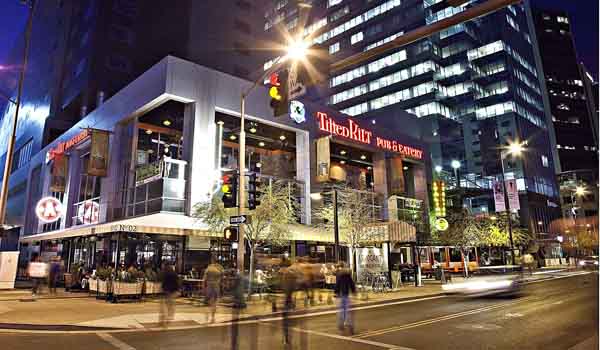While some criteria for classifying a building as a core asset a decade ago still remain, changing trends in the market and tenant demands are recalibrating the way we think about core assets in the Valley.
Property value, land scarcity and an institutional component originally drove market demand for core assets. The same is true today for the most part, but now tenants also look for an urban environment, walkability, amenities and features to help attract and retain employees to the area through the experiences being offered.
“A core asset is one whose value first-and-foremost is retained over time, with the expectation of reliable appreciation,” says Gary Linhart, co-founder and principal at ViaWest Group. Adding to the property’s value is location and limited supply of available land for new developments.
Older properties like the Esplanade and Biltmore Center, largely considered two of the Valley’s most prominent and well-recognized core assets, are starting to show signs of its age and required interior and exterior tenant improvements to keep up with today’s standards.
“When it [Biltmore Center, formerly Biltmore Financial Center] was built, it was designed for the long-term, with the highest quality finishes at the time, at the top intersection in Phoenix,” explains Linhart. “However, in order for a core asset to stay a core asset, reinvestment is necessary to keep the building up-to-date with changing trends and tastes.”
So when his company purchased the building last year, its task was to transform the aging structure with upgraded features and amenities to meet current tenant demands.
Whereas, newer buildings like Hayden Ferry Lakeside in Downtown Tempe and CityScape in Downtown Phoenix, already have the needed state-of-the-art features built in.
Linhart identifies Downtown Scottsdale, Downtown Tempe, Camelback Corridor and Downtown Phoenix as the markets with core assets, which all have nuances that make them different.
“These core assets are in areas where the top companies want to and need to be,” he explains. “At any time, it has to offer to the top tenants in the marketplace the experience, technology and quality of space they demand.”
Today’s core assets are unique in the ability to transform a building and its surroundings into a premiere destination by creating a first-class experience for those entering it.
“You have to look at each project holistically; how it ties to its natural surroundings, flexibility, and how people emotionally connect with said place,” explains Rory Carder, president of DAVIS. “Any core asset, no matter what city, requires walkability; it’s the essence of urbanization,” she says. Although Phoenix is still a young city, she thinks it’s making strides in the right direction.
“A core asset flourishes on the people that inhabit them,” explains Carder. “It thrives on the energy you feel from that specific piece of real estate.”
The old corporate environment of the 1980s and 90s is fading away. Instead, employees want options that fit their flex schedules and lifestyles. Linhart says, “The common areas, such as outdoor spaces with shaded seating areas, tenant lounges, fitness centers, on-site restaurants, coffee shops and lobbies are becoming vital components of a core asset.”
Back in the day, a strong institutional corporate tenant and a few nearby restaurants were enough to attract high-end tenants. State-of-the-art structural features were always expected and still are, but the delivery of a quality tenant experience is what sets these buildings apart from the others.
Linhart explains, “In a wired-world in which people can work from anywhere, an office building that wants to attract paying tenants must provide an experience, particularly if the office building owners wish to command a premium rent.”
Kevin Calihan, senior vice president of CBRE, echoes that point. Companies need to be in a good position to compete for a quality workforce with a site that will attract Millennials and the educated employees they want, he says.
“Companies want to give their employees high quality of life, a great work environment and that’s what locations like The Galleria and Hayden Ferry Lakeside provide,” Calihan adds.
The Galleria Corporate Centre in Downtown Scottsdale, an old mall converted into class A office space, is largely considered a core asset by today’s standards.
Calihan says the change in demand to be in close promiximity to retail, entertainment and hospiliatilty options thrusted the Galleria into its current core asset status, which wasn’t the case for the failed mall ten years ago.
Carder refers to her offices at Hayden Ferry Lakeside as an example of a core asset in Downtown Tempe where employees can explore any of the nearby businesses or enjoy a yoga session in the park overlooking Tempe Town Lake.
Downtown Phoenix’s CityScape is a prime example of a core asset for its location, proximity to nearby amenties, elegant finishes and sheer size, which contributes to its success and 95-percent lease rate. It has all the needed ingredients: amenities, growing urbanization, booming residential developments and entertainment venues.
Location, prestige, supply and demand still remain important in securing high-level tenants at core assets, but today’s standards also require an atmosphere for those entering to remember and want, which differentiates a core asset from any other ordinary building.




